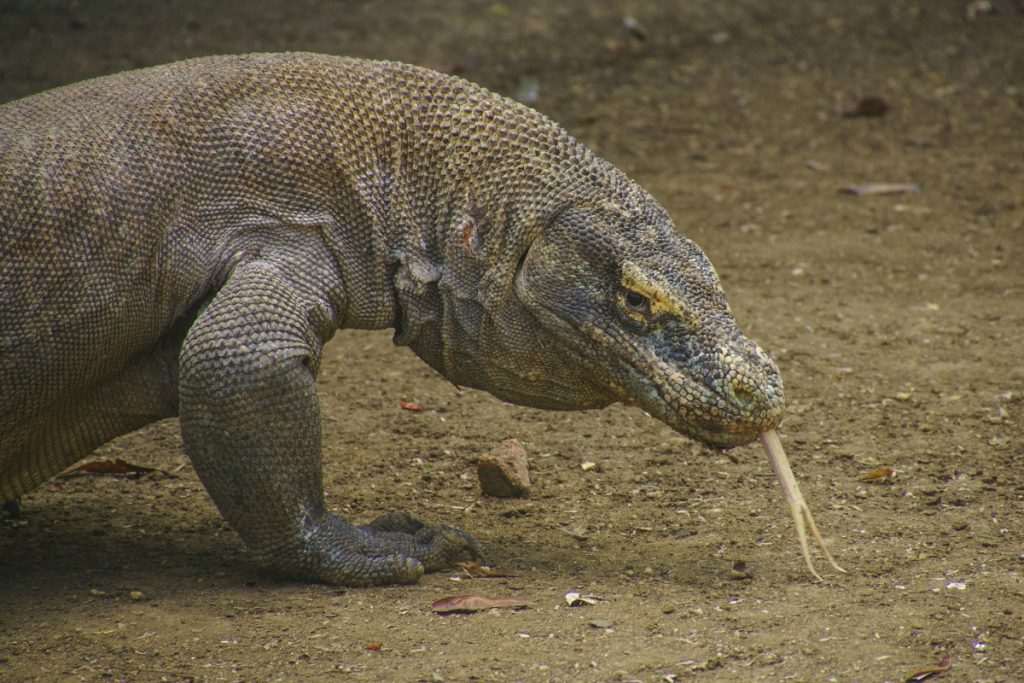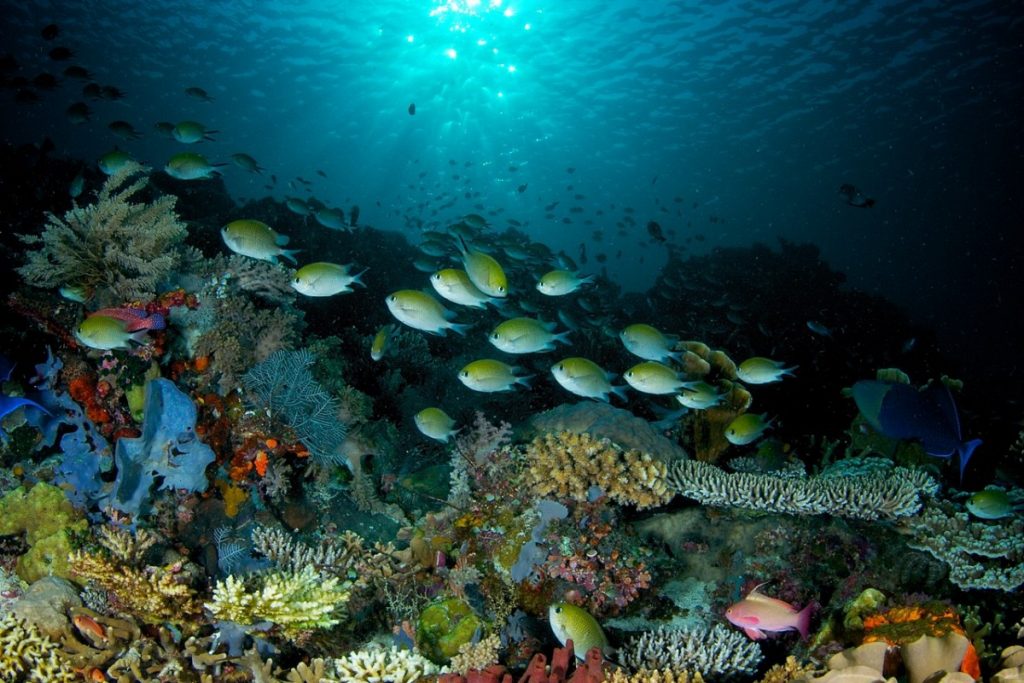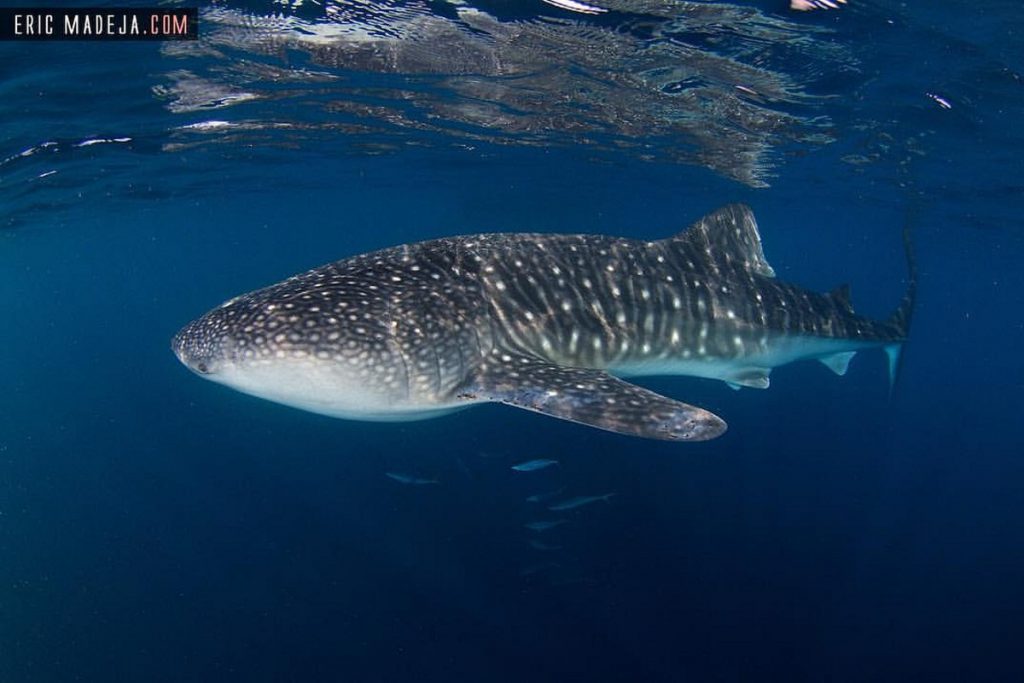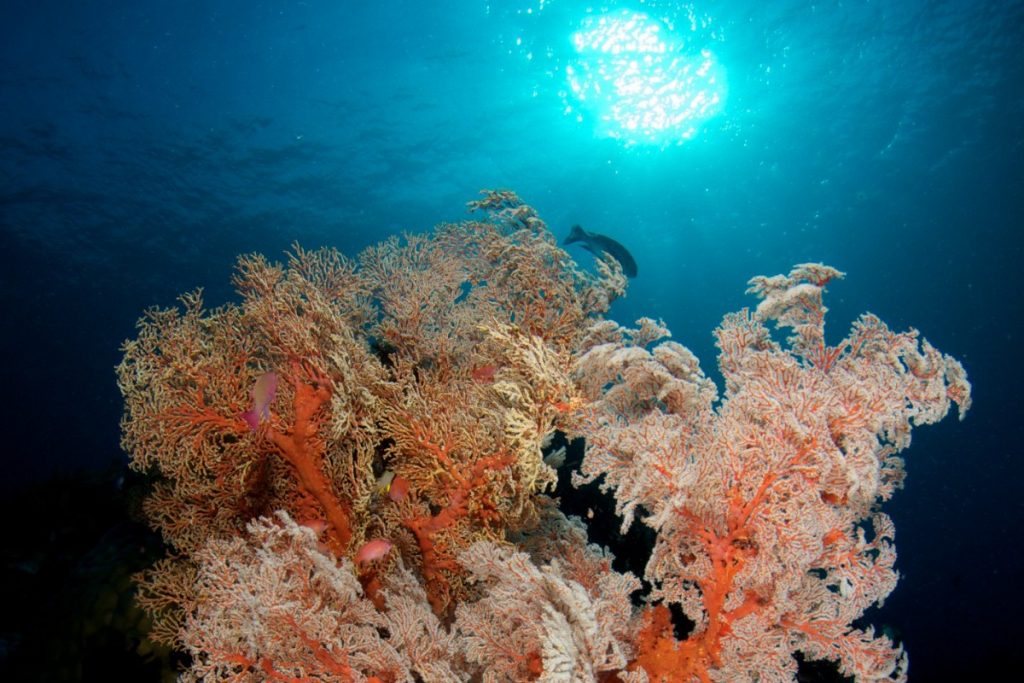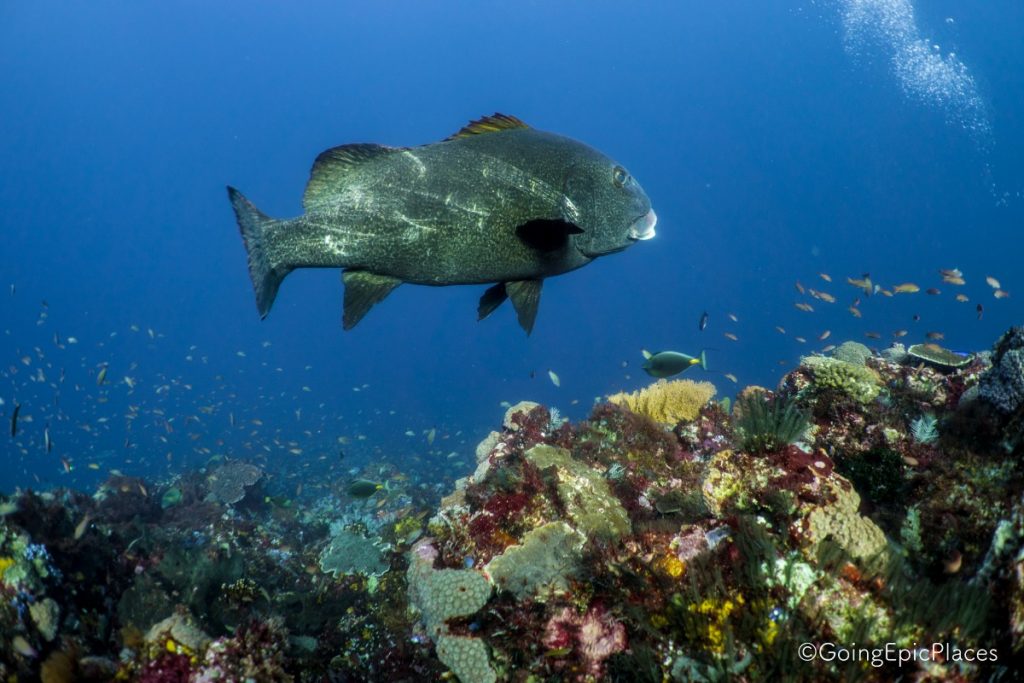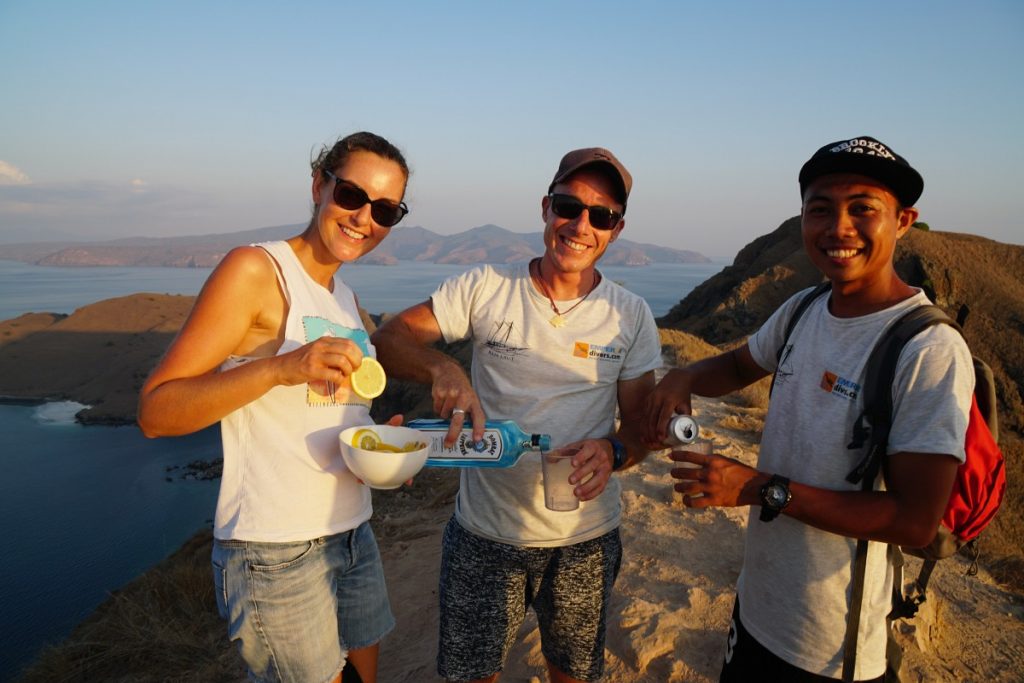Komodo National Park
July to September | Labuan Bajo to Labuan Bajo
7 nights | Gili Lawa, Tatawa, Makassar Reef, Wainilu, Batu Bolong, Padar, Nusa Kode, Manta Alley
Itinerary Highlights
- Komodo National Park is world renowned for the excellent quality and variety of diving.
- Generally, this cruise visits the Central and Southern Sections, depending on sea and wind conditions we may visit the Central and Northern Sections.
- In the north, the black sands of the Sangeang Volcano with its critters and bubble flows and the beautiful reefs surrounding Gili Banta.
- In the south, manta action and nutrient rich reefs with ocean flow from the Indian Ocean.
- Central section reefs and small islands teem with life fed by the currents running between the islands of Komodo and Rinca.
The Komodo National Park is world renowned for the excellent quality and variety of diving. Water temperatures change between the north and south of the Park and provide varied encounters. In the north we have the black sands of the Sangeang Volcano with its critters and bubble flows and the reefs around Gili Banta. The south provides cooler temperatures with manta action and nutrient rich reefs with ocean flow from the Indian Ocean. The central section provides reefs and small islands teeming with life fed by the currents running between the islands of Komodo and Rinca. Add to this the chance to see the famous Komodo Dragon in its natural habitat, beautiful beaches, look-outs to climb and you have a paradise both below and above the water.
A 7-night cruise generally takes in sites in the Central and Southern Sections of the Komodo National Park. On occasions the cruise will take in the Central and Northern Sections depending on sea and wind conditions, especially related to southerly swells.
- Northern Section & Sumbawa: Sangeang Volcano, Gili Banta, Batu Moncho
- Central Section: Gili Lawa, Tatawa, Siaba Besar, Makassar Reef, Wainilu, Batu Bolong
- Southern Section: Padar, Nusa Kode, Manta Alley
Explore the map below for dive sites and descriptions.
Land visits: See the famous Komodo Dragon in its natural habitat, beautiful beaches, look-outs to climb and a paradise both below and above the water. Visit to the traditional village of Bonto on Sangeang Island.
Please note: In South Komodo the water temperatures can drop from 28°C to around 20°C. A 5mm wetsuit and hood is highly recommended for this region. Water temperatures in the central and northern section of the park average 27-28°C. Please be aware the dive sites and areas mentioned in our itineraries are not guaranteed. They are subject to change based on weather conditions and are at the discretion of our cruise director/captain. This is to ensure we provide the best sightings and activities possible during your dive experience while also prioritising your safety.
Dive Sites
Click dive site markers for detailed descriptions.
Dive sites & areas that we may visit are subject to weather conditions.
Batu Bolong
Batu Bolong is a world class dive site. It's a small island in the middle of the Komodo channel, the currents can be really strong here due to the topography and the channel funneling water through. Diving this conicle rock will bring you into an amazing marine life, schools of fish of different species, vibrant and rich soft and hard corals, sponges and large pelagics such as sharks, rays, tunas, giant trevallies and so much more.
Gili Lawa
- Castle Rock -
Castle Rock is one of the highlights of Komodo, located north of Gili Lawa laut. In open water, this huge pinnacle with a top at a depth of 5 mtrs is subject to strong currents, offering rich and dense varieties of fish species, soft and hard coral, enormous schools of fish including Surgeon fish, Unicorn fish, Banner fish, as well as grey reef sharks, giant trvallies, tunas and other large pelagics.
- Crystal Rock -
Crystal clear waters, offer endless vibrant soft corals, healthy hard corals with schools of pink, orange, and yellow anthia fish, fusiliers, sweetlips and the commonly seen moray eels and scorpion fish. Exposed to strong currents, this islet which breaks the surface at low tide can be subject to strong currents which attract big marine life, like grey reef sharks, white tip reef sharks and giant trevallies.
- Golden Passage -
This dive site is the channel that separates Gili Lawa Darat from Komodo Island. Nice drift dive into a beautiful coral garden, you will cross the channel at around 18m surrounded by amazing topography, schools of sweetlips, humphead parrot fish, trevallies and reef sharks.
- Lighthouse -
Lighthouse is located at the Northeast point of Gili Lawa Laut, the dive site takes its name from the small lighthouse that is situated above. It's exposed to current and you will drift for a long distance to the cape, on a sloping reef covered with abundant hard and soft coral, until the action at the corner where you can see giant travalies, napolean wrasse, snappers, sweetlips, batfish and sharks.
- Shotgun -
Shotgun, also named the cauldron is located between Gili Lawa Laut and Gilia Lawa Darat in the North Komodo area. This channel between the two islands offers great conditions with strong currents. At low tide there is chance for fantastic encounters in the rich and healthy corals, of schools of giant trivaly, reef sharks, napoleon wrasse, and for the lucky ones, mantas.
Makassar Reef
Makassar reef aka Manta Point is located between Komodo Island and Tatawa. This dive spot is comparable to a lunar landscape with dead coral, small stones and a succession of dunes and small craters. Some rocky areas are covered with soft and hard coral. This configuration creates the cleaning stations for Manta rays and sometimes we see black tip reef sharks, giant trevallies, parrotfish, turtles and eagle rays.
Sangeang Volcano
Sangeang is a volcano towering over the surrounding Lesser Sunda Islands. Also known as "Gunung Api", the volcano is still active, its twin cones regularly send plumes of ash and smoke into the sky. The active nature of the volcano can be seen underwater as well - divers aren’t the only ones causing bubbles. The reefs are home to a huge variety of soft and hard corals as well as anemone and they are rich with colourful reef fish.
- Hot Rocks -
Hot Rocks, also sometimes named "Bubble Reef", is a spectacular dive site. Rich plankton filled waters, bubbles coming up from the sand, a huge concentration of various colours of black coral bushes, whip corals, sea fans and fluorescent anemones make it a real diving highlight.
- Deep Purple -
Deep purple is a fantastic dive site named for the large number of huge purple Muriacella sea fans that have grown on the sheer sides of a massive volcanic boulder that, along with the vertical wall at the furthest end of the extending reef have created a deep canyon.
Siaba Besar
Located in a protected bay, Siaba Besar or otherwise known as Turtle Point, is ideal for easy dives and scuba diving with turtles. Also nice hard coral gardens, and great night dives with bobtail squid, maybe flamboyant cuttlefish, mantis shrimps, rays, giant morays and more.
Tatawa
- Tatawa Kecil -
Tatawa Kecil is a small island notheast of Komodo. The richness of species make Tatawa Kecil a small jewel inside the archipelago. Drift from the south-west corner of this small island, on the plateau located between 20-24m. Always have a look in the blue, as you can often see mobula rays, eagle rays, giant trevallies and some sharks patrolling the area.
- Tatawa Besar -
Tatawa Besar is a wonderfull drift dive, on a shallow reef from 8 to 20 meters. It's one of the most amazing coral gardens of the Komodo national park. A beautiful combination of hard and soft corals with mostly orange-reddish hues and with clear waters, its an amazing spectacle. Huge sponges will offer protection for hidden leaf scorpiofish, young batfish, nudibranches, and moray eels.
Wainilu
Wainilu is located at the exit of Loh Buaya bay, and offers a wonderfull macro dive. The top of the reef is composed of dead broken coral, here we can see mating mandarin fish at sunset, and many other critters such as ghost pipe fish, nudibranchs, frogfish, zebra crab, harlequin and even tiger schrimps, to name a few.
Gili Banta
Imagine yourself diving inside the caldera of a volcano without ever having to climb above sea level to get there. Gili Banta (Banta Island) is an ancient, uninhabited, partially submerged volcano off the Northwest coast of Sumbawa.
- Roller Coaster -
In the northern part of Gili Banta, Roller coaster a.k.a "Tanduk Rusa"consists of undulating walls and steep slopes to 40 meters, swept with vertical as well as horizontal currents. The large rock formations and deep canyons attract a variety of sharks including grey reefs, whitetips, and blacktips. Encounter schooling fish and pelagics like giant trevally, big eyed jacks and tunas. From the currents on the walls and slopes, head west to the sloping reef, covered with hard and soft corals, home to many blue ribbon eels.
- Star Wars -
On the Northeast part of Gili Banta, Star Wars is a gentle slope down to 30m, covered with beautiful coral, and home for many small fish. The shallow area is very healthy and you may be lucky to meet a manta on the safety stop.
- GPS Point -
Located to the northeast of Banta, this submerged seamount 7m below the surface descends to between 30 amp; 40 m and is a beautiful coral garden, where the strong currents attract large pelagics like barracuda, dogtooth tuna, spanish mackerel and sharks.
Batu Moncho
Crystal clear turquoise waters and many fish species will welcome you in this paradisiac spot. If you are lucky you might see some dolphins or whale sharks. Discover the coral reefs or hike all the way up the hills where you will catch sight of a marvellous view.
Manta Alley
Located in the South of Komodo, where the water is cooler, this dive site is famous for the manta cleaning station on the western side and its stunning coral reef. The Alley is a channel situated between the east and west side of the rocks creating strong currents for the mantas to hangout in and is also a breeding hot spot. It's possible to see several mantas at the cleaning station, in the alley or feeding on the east side and also enjoy the magnificent reef and varied marine life.
Padar
- Secret Garden -
The Secret Garden of Padar is an incredible garden of soft corals covered with many black coral bushes. A little bit deepeer the wall will appear more and more covered with soft coral, with small rocks, sponges and seafans. Sweet lips, snappers, jack fish and maybe mobula rays can be spotted here. There are also many macro critters as well such as octopus, ghost pipe fish, and nudibranchs.
- Three Sisters -
The Three Sisters a.k.a. Tiga Dara are 3 huge rocks 20 to 30m deepbased on a sandy bottom. On the sandy bottom hiding under rocks you can find coral cat sharks if you are lucky. The top part of the rocks are about 3m deep, perfect to finish the dive in the shallow water.Covered with gorgeous rich corals, hiding the nudibranchs, sea cucumbers, and starfish congregate.
Nusa Kode
- Boulders -
The Boulders as the name suggests are made up from large boulders, creating a habitat for many species including juvenile and adult bamboo sharks, schooling fish, Nudibranch and pelagics. Divers diving the boulders have also been lucky enough to spot Rhinopia here in the form of Paddleflap scorpion fish.
- Cannibal Rock -
Cannibal Rock, located between the north of Nusa Kode and south of Rinca in Horshoe bay, is one of the highlights of the Komodo area. With its incredible biodiversity because of its nutrient rich cold waters, macro lovers and photographers will discover a wide range of strange and weird critters, soft corals and black coral bushes. Its not unusual to spot some rares nudribanchs, fire urchins with zebra crabs or even colemen shrimps, frogfish, anemones and the famous endemic Sea Apple.
- Rhino Rocks -
To the west of Torpedo Alley, this sandy slope covered with short soft pulsing corals that is home to many critters. Hidden under every rock there is a chance to find rare critters such as fire urchins with zebra crabs or coleman shrimps, Juvenile frogfish, ribbon eels and as the name of the site suggests, there is a chance to find the holy grail of all photographers the "Rhinopia" (which originally gave the site its name).
- Torpedo Alley -
Torpedo Alley, named after the pancake sized electric torpedo rays, is located on the south side of Rinca Island in horseshoe bay, this black sand bay will be heaven for macro lovers. Start your dive in front of the old river bed and from 5 to 18 m all the rocks and debris creates a habitat for all kinds of weird and wonderful critters. From the frogfish, flying gurnards, blue ring octopus, sea horses, and so much more.
- Yellow Wall of Texas -
The Yellow Wall of Texas dive site is located off the southeast coast of Rinca. The beautiful wall starts from 5m and drops down to 30m. The wall is covered in yellow soft corals, tubestrea and sponges. This is where we can see many varieties of Nudibranch, and the yelow soft corals are home to tiny lady bugs. There is also an abundance of tiny yellow sea cucumbers.
Labuan Bajo
Also Important
Check Dive & Depart Labuan Bajo
Once onboard there will be a safety briefing, crew introduction, complete and check dive paperwork, cabin allocation and boat orientation. The first dive is a check dive.
Return to Labuan Bajo
On the last diving day, the day before disembarkation, you will have the opportunity to visit the Komodo Dragons on Rinca Island. One dive is offered on this day, after breakfast and whilst observing the rule of no diving within 24 hours of reaching altitude. Evening-time pack up diving equipment and settle any outstanding bills ready to depart for the airport or hotel early the following morning.
Itinerary Experience
Advanced, 50 dives
This itinerary is not for beginners with many dives below 18m and currents can vary from medium to extremely strong. We recommend that you have 50 logged dives and require that you are a Deep Diver/Advanced Open Water Diver or equivalent to join this trip. Divers may find many dives challenging and may be asked by the Cruise Director to skip dives that are not suitable for their diving experience. Diving is from zodiacs to give precise entry and exit points.

